US Commercial Banking Market Size
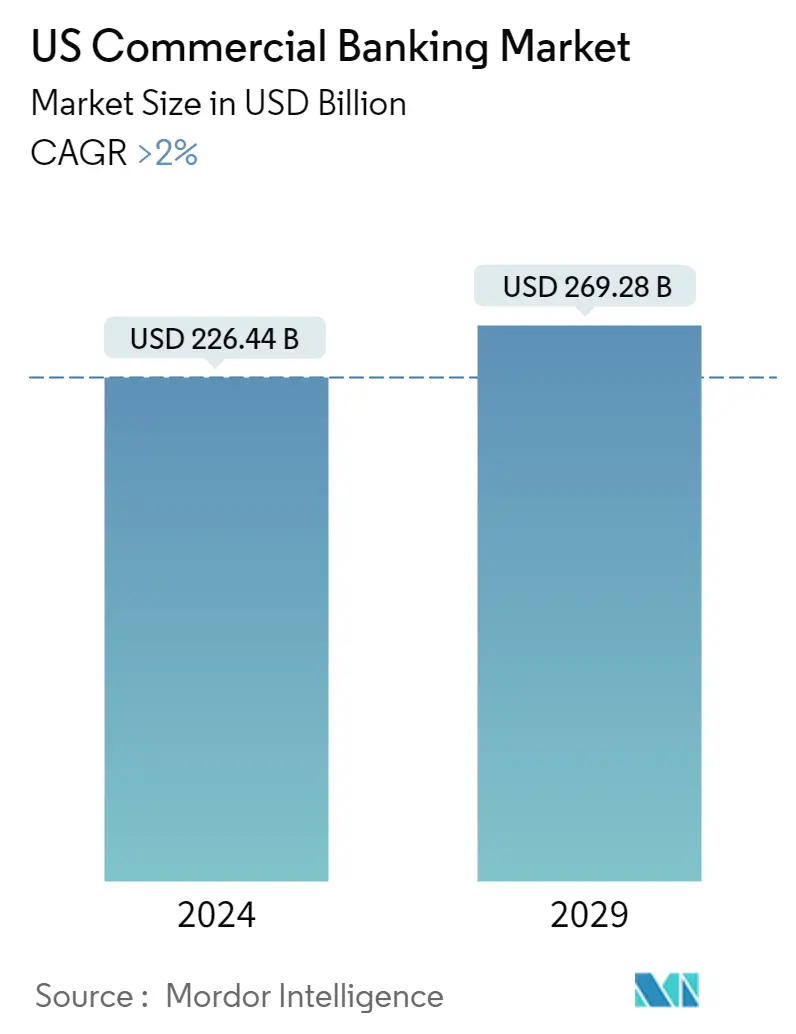
| Study Period | 2020 - 2029 |
| Base Year For Estimation | 2023 |
| Market Size (2024) | USD 226.44 Billion |
| Market Size (2029) | USD 269.28 Billion |
| CAGR (2024 - 2029) | 2.00 % |
| Market Concentration | Medium |
Major Players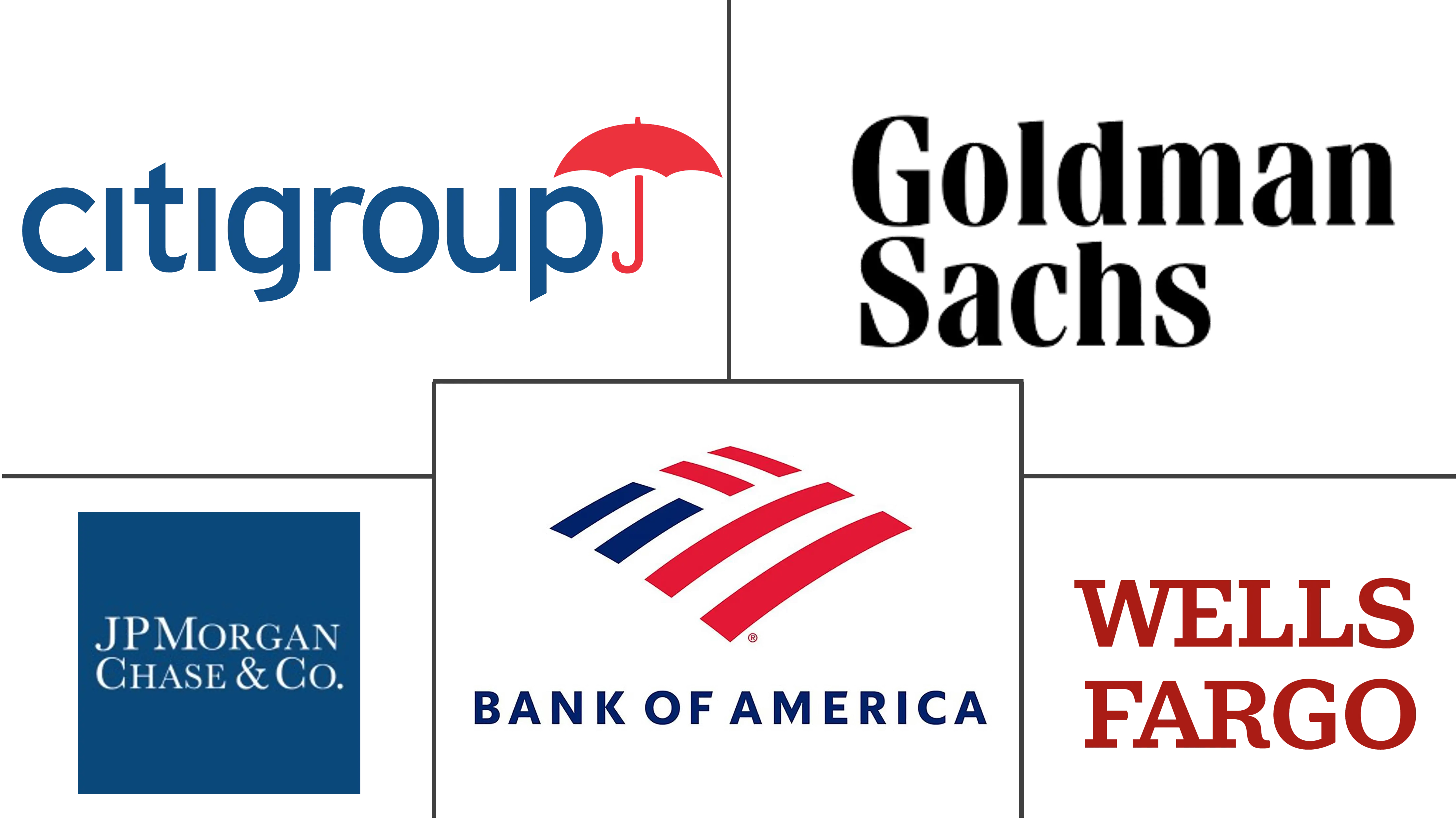
*Disclaimer: Major Players sorted in no particular order |
US Commercial Banking Market Analysis
The US Commercial Banking Market size is estimated at USD 226.44 billion in 2024, and is expected to reach USD 269.28 billion by 2029, growing at a CAGR of greater than 2% during the forecast period (2024-2029).
The primary source of revenue for most banks is business lending, which typically accounts for 60% of their revenue in addition to their absolute loan portfolio, particularly for provincial and smaller banks. Several leading banks in the United States are investing in innovation as a key factor for their future growth, in some form or another. As for customer portals and applications, in the current computerized banking landscape, IT drives are having similar effects in the back-office as they do in client-facing channels. Corporate and commercial banking revenue in the United States has increased at a rate that is twice the rate of economic growth.
The commercial banking market in the US is expected to see an increase in partnerships between FinTech firms and digital lending companies for payment collections. Open banking is also expected to reshape the competition in the market in the next few years. Banks that invest in capabilities will position themselves well to remain strong consumer brands.
However, loan growth has increased in the last few months, with annual growth slowing from nearly double digits late the previous year to around 9%, indicating tighter conditions are starting to dampen bank credit growth. Over the last three years, household budgets have benefitted from excess savings and debt relief from the COVID-19 pandemic, but that is about to change.
The coronavirus pandemic has had a significant impact on financial inclusion, leading to a surge in digital payments at a time when formal financial services are expanding globally.
US Commercial Banking Market Trends
Increased Digitalization in the Commercial Banking
Digital transformation is well underway in commercial banking, and IT leaders in the sector anticipate that the strategic value of digital innovation will grow significantly over the next couple of years. Although cash digitization and digital financial services have evolved to meet consumer needs, it can be difficult for some providers to keep up with the fluidity of digital commerce and fast-paced innovation.
For instance, Citi has unveiled the launch of CitiDirect®, a new digital platform designed to meet the needs of its commercial banking clients. This initiative is part of a larger strategic investment strategy to meet the increasing global demands of these customers by providing a unified digital platform. The platform is currently available in the United States, with more than two-thirds of the company's U.S client base utilizing it, and the company plans to expand its reach to other markets in Asia in the latter part of 2023, including Hong Kong and Singapore, as well as the United Kingdom.
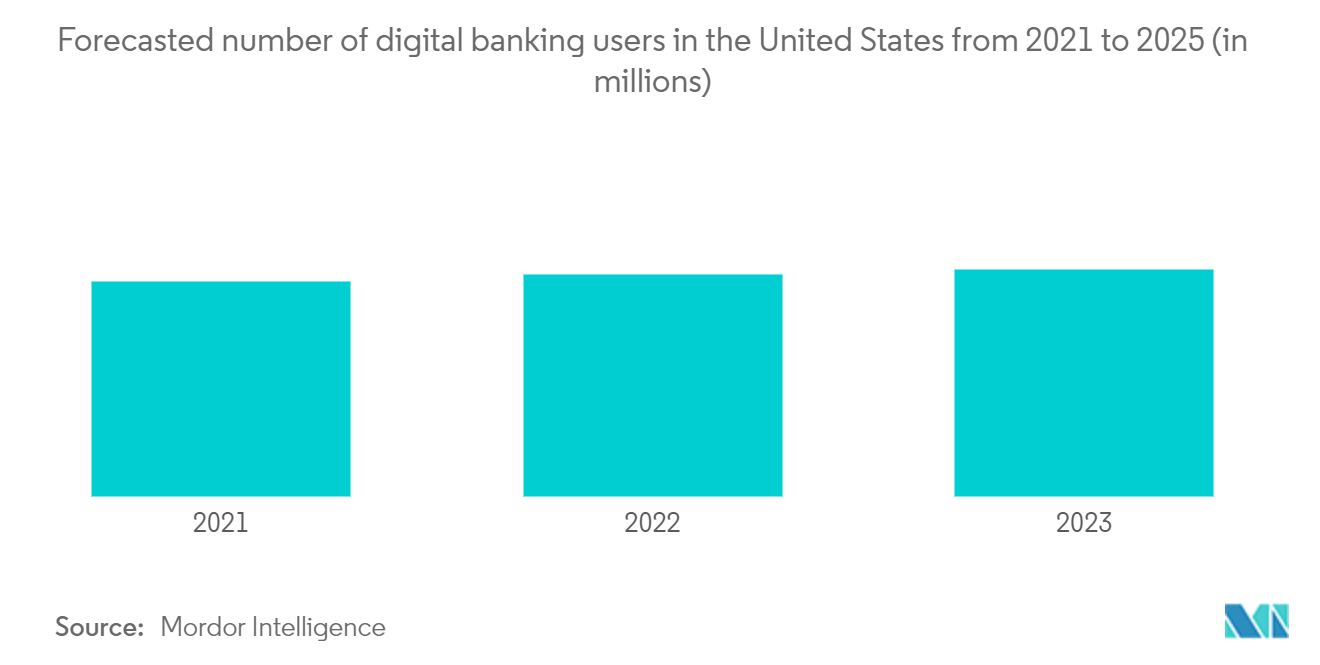
Use of Open Banking is gradually increasing in United States.
Open banking gives consumers more options and a comprehensive range to help them achieve financial wellness. It gives them better access to faster and more personalized digital platforms that help them monitor their spending, stay on their budget, and reach their financial goals. The timing of open banking is critical as we head into 2022 with increased uncertainty about the economy's future.
Consumer demand for seamlessly connected services has led to the development of a state-of-the-art, open banking environment in the U.S. Open banking allows financial service providers to leverage consumer-consented financial data to provide their customers with more tailored, flexible, and creative experiences. This value proposition resonates strongly with consumers in the United States – 87% of U.S. consumers use open banking. Consumers commonly connect their bank, investment, and loan accounts to multiple financial applications that provide payment, personal finance, BNPL, and more.
Bank apps dominate customer financial services interactions, with 76% of consumers connecting their financial accounts to an app for sending or receiving payments, second only to payment applications at 68%.
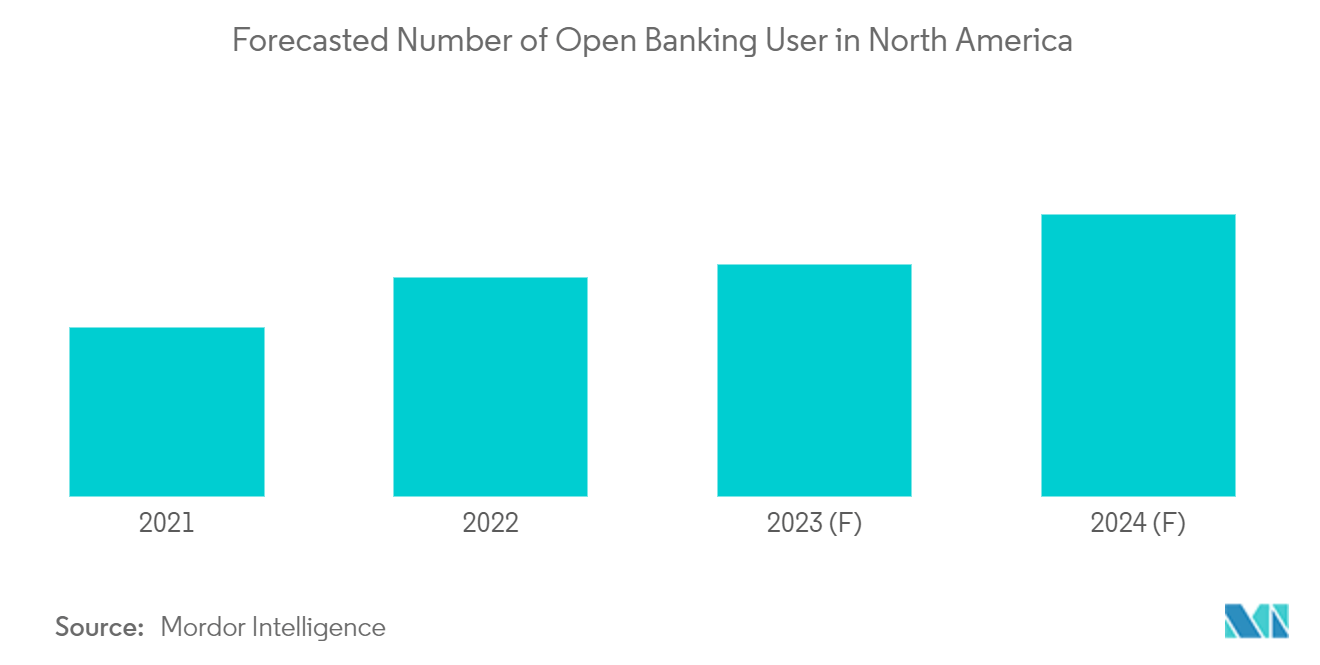
US Commercial Banking Industry Overview
The US Commercial Banking Market is highly competitive, with major international players. The US commercial banking market presents opportunities for growth during the forecast period, especially for the FinTech startups collaborating with these prominent players, which is expected to drive market competition further. With a few players holding a significant share, the US commercial banking market has an observable level of consolidation and has the highest market share in a decade. The major players dominating the market are JPMorgan Chase & Co., Bank of America Corp., Citigroup Inc., Wells Fargo & Co., and Goldman Sachs Group Inc.
.
US Commercial Banking Market Leaders
-
JPMorgan Chase & Co.
-
Bank of America Corp.
-
Citigroup Inc.
-
Wells Fargo & Co.
-
Goldman Sachs Group Inc.
*Disclaimer: Major Players sorted in no particular order
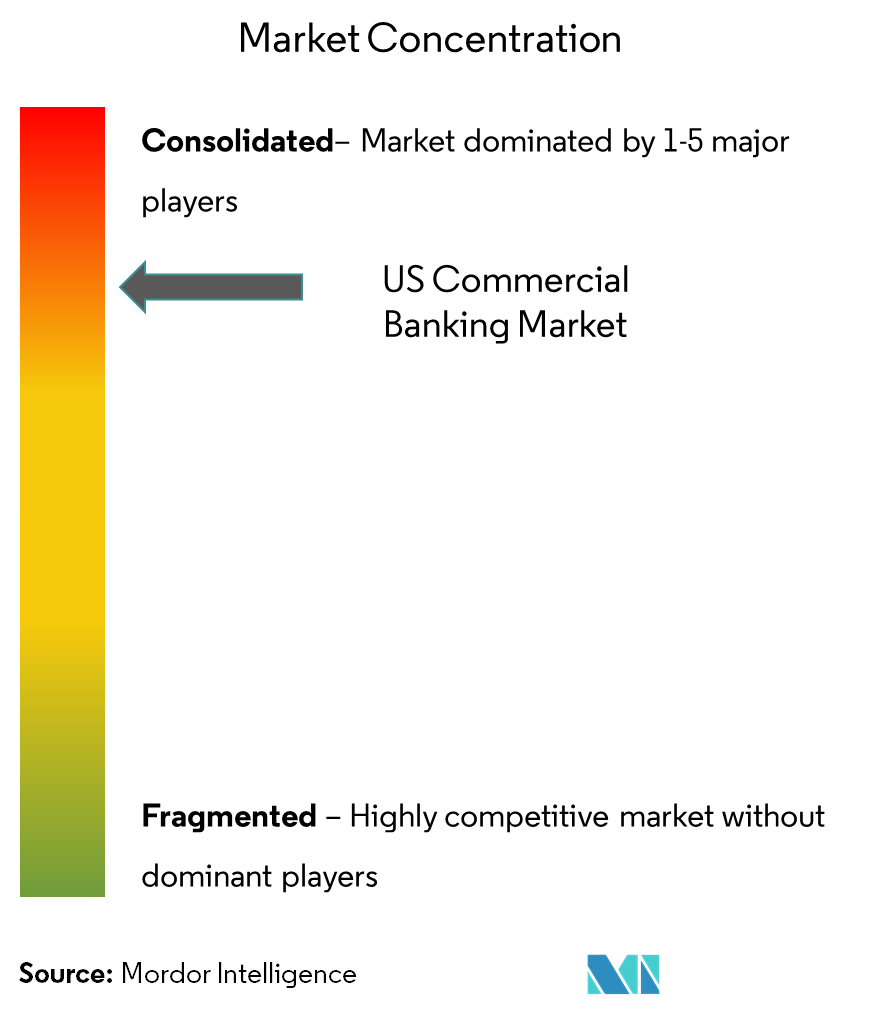
US Commercial Banking Market News
- July 2023: Citi has launched its Trade and Working Capital eLoans solution for its U.S. CCB clients. The solution is designed to help clients meet their current and projected working capital needs through loan advances via Citi’s easy-to-use and secure eLoans platform. The eLoans platform aims to support clients by allowing qualified clients to access liquidity for running their commercial business, reducing manual touch points, allowing clients to manage outstanding loans via repayment features, and enhancing self-service reporting via automated notifications, among other features.
- May 2023: JPMorgan Chase acquired the substantial majority of assets and assumed the deposits and certain other liabilities of First Republic Bank from the Federal Deposit Insurance Corporation (FDIC). Acquisition of most of First Republic Bank’s assets, including approximately USD 173 billion of loans and about USD 30 billion of securities.
US Commercial Banking Market Report - Table of Contents
1. INTRODUCTION
- 1.1 Study Assumptions & Market Definition
- 1.2 Scope of the Study
2. RESEARCH METHODOLOGY
3. EXECUTIVE SUMMARY
4. MARKET DYNAMICS
-
4.1 Market Drivers
- 4.1.1 Deepening Share of Wallet Through Fee-Based Products
- 4.1.2 Embedding Data and Analytics in Decision Making
-
4.2 Market Restraints
- 4.2.1 Rising Loan Interest Rates
- 4.2.2 Decrease in the Use of Big Data, AI, and Advanced Analytics
-
4.3 Market Opportunities
- 4.3.1 The Ongoing Rise of Fintech Companies
- 4.3.2 Increased Regulatory Developments in Commercial Banking
-
4.4 Porter's Five Forces Analysis
- 4.4.1 Bargaining Power of Suppliers
- 4.4.2 Bargaining Power of Buyers/Consumers
- 4.4.3 Threat of New Entrants
- 4.4.4 Threat of Substitute Products
- 4.4.5 Intensity of Competitive Rivalry
- 4.5 Impact of COVID-19 on the market
- 4.6 Digital Disruptions and Technological Trends in the US Banking Industry
5. MARKET SEGMENTATION
-
5.1 By Product
- 5.1.1 Commercial Lending
- 5.1.2 Treasury Management
- 5.1.3 Syndicated Loans
- 5.1.4 Capital Market
- 5.1.5 Other Products
-
5.2 By Function
- 5.2.1 Accepting Deposits
- 5.2.2 Advancing Loans
- 5.2.3 Credit Creation
- 5.2.4 Financing Foreign Trade
- 5.2.5 Agency Services
- 5.2.6 Other Functions
6. COMPETITIVE LANDSCAPE
- 6.1 Market Concentration Overview
-
6.2 Company Profiles
- 6.2.1 JP Morgan
- 6.2.2 Bank of America
- 6.2.3 Wells Fargo
- 6.2.4 Citibank
- 6.2.5 Goldman Sachs Group Inc
- 6.2.6 Morgan Stanley
- 6.2.7 US Bancorp
- 6.2.8 PNC Financial Services Group Inc
- 6.2.9 Capital One Financial Corp
- *List Not Exhaustive
7. MARKET FUTURE TRENDS
8. DISCLAIMER
** Subject To AvailablityUS Commercial Banking Industry Segmentation
Commercial banks are financial institutions that provide a range of services to the general public, including withdrawals and deposits, as well as lending for investment. Borrowing and lending are the two main components of commercial banking.
The United States Commercial Banking Market Is Segmented by Type of Product (Depository Services, Other Non-Interest Income Generating Products, Lending services such as commercial and Industrial loans, Residential, Agricultural, and Real Estate loans, Loans to individuals excluding credit cards and credit card loans, and other services. The report offers market sizes and forecasts in value (USD) for all the above segments.
| By Product | Commercial Lending |
| Treasury Management | |
| Syndicated Loans | |
| Capital Market | |
| Other Products | |
| By Function | Accepting Deposits |
| Advancing Loans | |
| Credit Creation | |
| Financing Foreign Trade | |
| Agency Services | |
| Other Functions |
US Commercial Banking Market Research Faqs
How big is the US Commercial Banking Market?
The US Commercial Banking Market size is expected to reach USD 226.44 billion in 2024 and grow at a CAGR of greater than 2% to reach USD 269.28 billion by 2029.
What is the current US Commercial Banking Market size?
In 2024, the US Commercial Banking Market size is expected to reach USD 226.44 billion.
Who are the key players in US Commercial Banking Market?
JPMorgan Chase & Co., Bank of America Corp., Citigroup Inc., Wells Fargo & Co. and Goldman Sachs Group Inc. are the major companies operating in the US Commercial Banking Market.
What years does this US Commercial Banking Market cover, and what was the market size in 2023?
In 2023, the US Commercial Banking Market size was estimated at USD 222 billion. The report covers the US Commercial Banking Market historical market size for years: 2020, 2021, 2022 and 2023. The report also forecasts the US Commercial Banking Market size for years: 2024, 2025, 2026, 2027, 2028 and 2029.
What are the key drivers of the US Commercial Banking Market?
The key drivers of the US Commercial Banking Market are a) Growth in residential construction and renovation activities b) Increasing demand for digital banking solutions c) Rise of partnerships between FinTech firms and commercial banks d) Open banking allowing for more competition and innovative financial products
US Commercial Banking Industry Report
The US Commercial Banking Market, a crucial segment of the financial industry, offers a wide range of services such as commercial lending, treasury management, syndicated loans, and capital market services. It plays a vital role in economic growth by providing credit and financial services to a diverse clientele, including individuals, SMEs, large corporations, and government agencies. With a focus on innovation and technology, US commercial banks are enhancing their customer portals and mobile applications to meet evolving client needs. The competitive landscape sees banks investing in digital transformation and open banking to improve customer experiences and expand services. Despite challenges like regulatory compliance and high collateral demands, the sector is growing, driven by digital banking advancements, personalized services, and collaborations between traditional banks and FinTech companies. This growth reflects the evolving trends in US commercial banking. For detailed statistics on market share, size, and revenue growth, Mordor Intelligence™ Industry Reports offer a comprehensive analysis, including forecasts and historical overviews, available as a free report PDF download.



